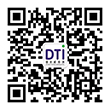French DGCCRF food contact material testing and certification for silicone produ
Date:2025-07-01 09:57:41 Classification
:【question】 Visits:
As food contact materials in France, silicone products need to pass DGCCRF testing and certification to ensure their safety and compliance. The following is detailed information about the French DGCCRF food contact material testing and certification of silicone products:
1. Certification background
DGCCRF is the French agency responsible for food contact material safety regulations. Its certification ensures that silicone products will not release harmful substances when in contact with food, protecting the health of consumers.
2. Testing items
When silicone products undergo DGCCRF certification, the following main testing items need to be carried out:
- Comprehensive migration test: Test whether silicone products will release harmful substances during contact with food.
- Peroxide value test: Test whether the peroxide in silicone products exceeds the standard.
- Total volatile organic matter test (VOM): Test whether the organic solvents used in the production process exceed the standard.
- Heavy metal test: Test whether silicone products contain heavy metal elements such as lead, cadmium, and mercury.
- Sensory test: Test whether the appearance, smell, taste, etc. of silicone products meet the standard requirements.
3. Testing standards
- DGCCRF 2004-64: French food contact material regulations covering a wide range of materials and products.
- AP 2004-5: French specific regulations on silicone products, which stipulates specific requirements for volatile organic compounds (VOC) and peroxide residues.
4. Testing process
1. Sample preparation: Prepare enough samples according to the test standards to ensure the representativeness of the samples.
2. VOC residue test: Use gas chromatography-mass spectrometry (GC-MS) and other equipment to test and determine the VOC residue.
3. Peroxide residue test: Use chemical analysis to determine the peroxide residue.
4. Sensory test: Perform odor, color and appearance tests to evaluate sensory effects.
5. Chemical analysis: Perform chemical analysis on the migration solution to determine the total migration amount.
6. Result determination: Determine whether the product meets the requirements of DGCCRF based on the test results.
5. Notes
- Sample representativeness: Ensure the representativeness of the sample to avoid result deviation caused by improper sample selection.
- VOC residue test: Select the appropriate test method to ensure the accuracy of VOC residue.
- Peroxide residue test: Strictly control the test conditions to ensure the reliability of peroxide residue.
- Chemical analysis accuracy: Select the appropriate analysis method to ensure the precision and accuracy of chemical analysis.
6. Certification information
The information required for DGCCRF certification includes:
- Basic information such as product name, model, specification, quantity, etc.
- Production process and formula of silicone products.
- Types of food that silicone products come into contact with.
- Packaging materials and sealing materials of silicone products.
- Certification certificate that complies with the French DGCCRF food contact material test.
7. Certification significance
Products certified by DGCCRF have higher credibility and competitiveness in the French market, ensuring the safety and compliance of the products and protecting the health of consumers.
Through the above information, you can better understand the specific requirements and procedures for DGCCRF food contact material testing and certification of silicone products in France.




 Shen Gongwang Security: 44030602006947
Shen Gongwang Security: 44030602006947